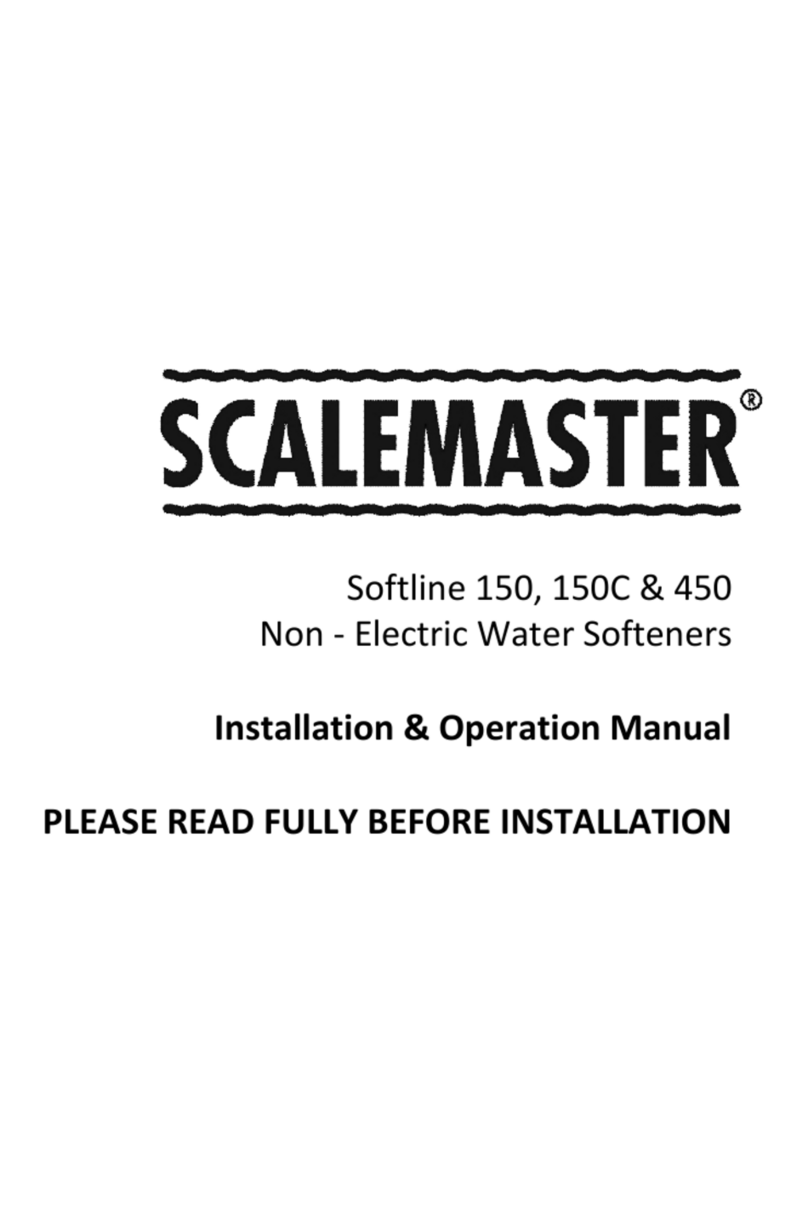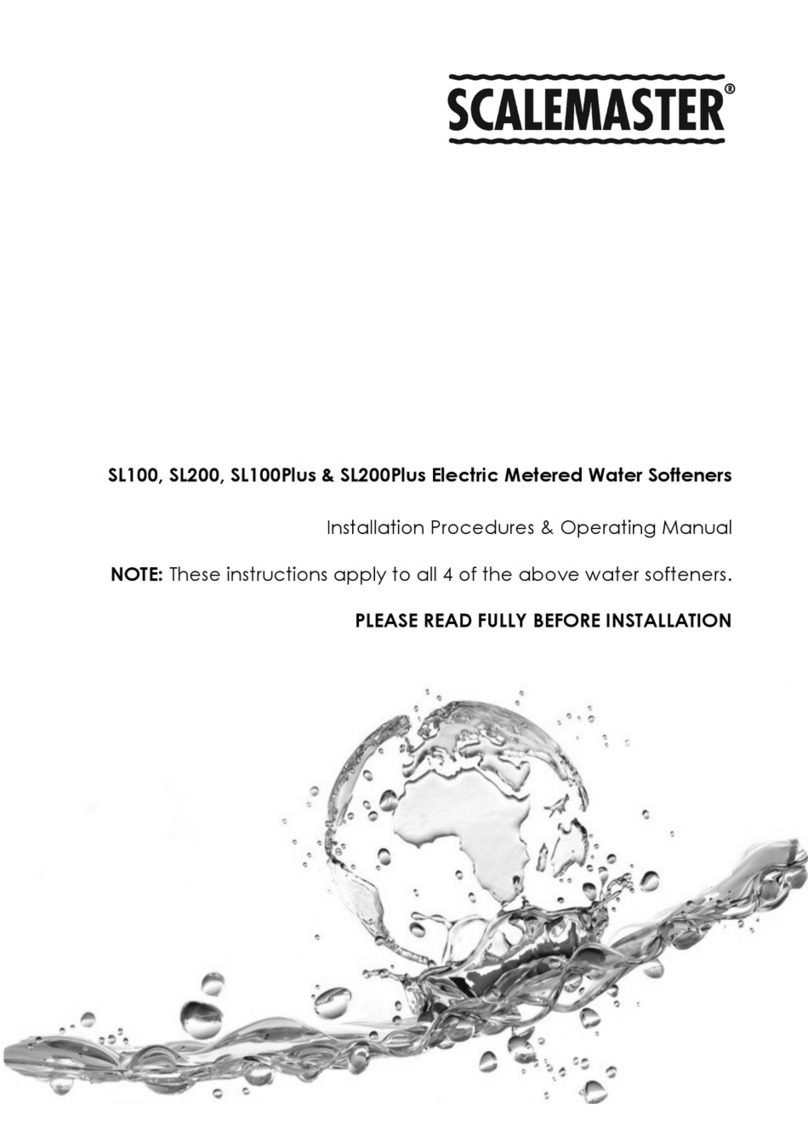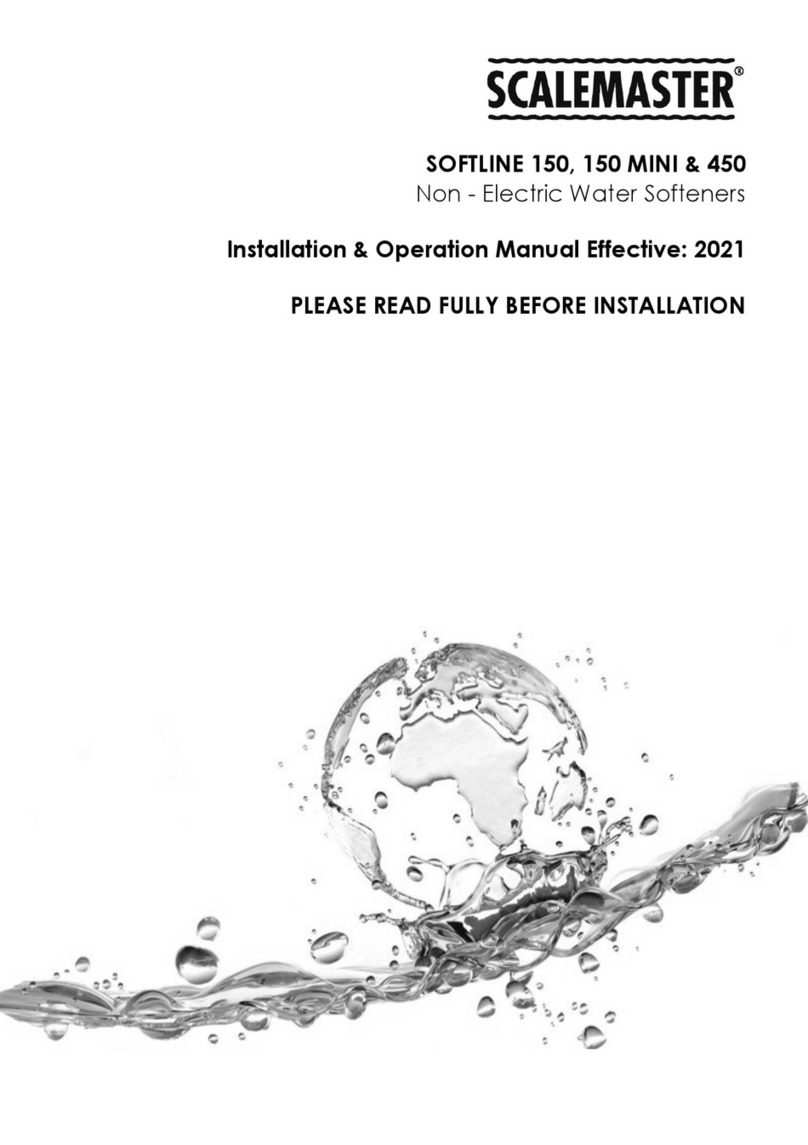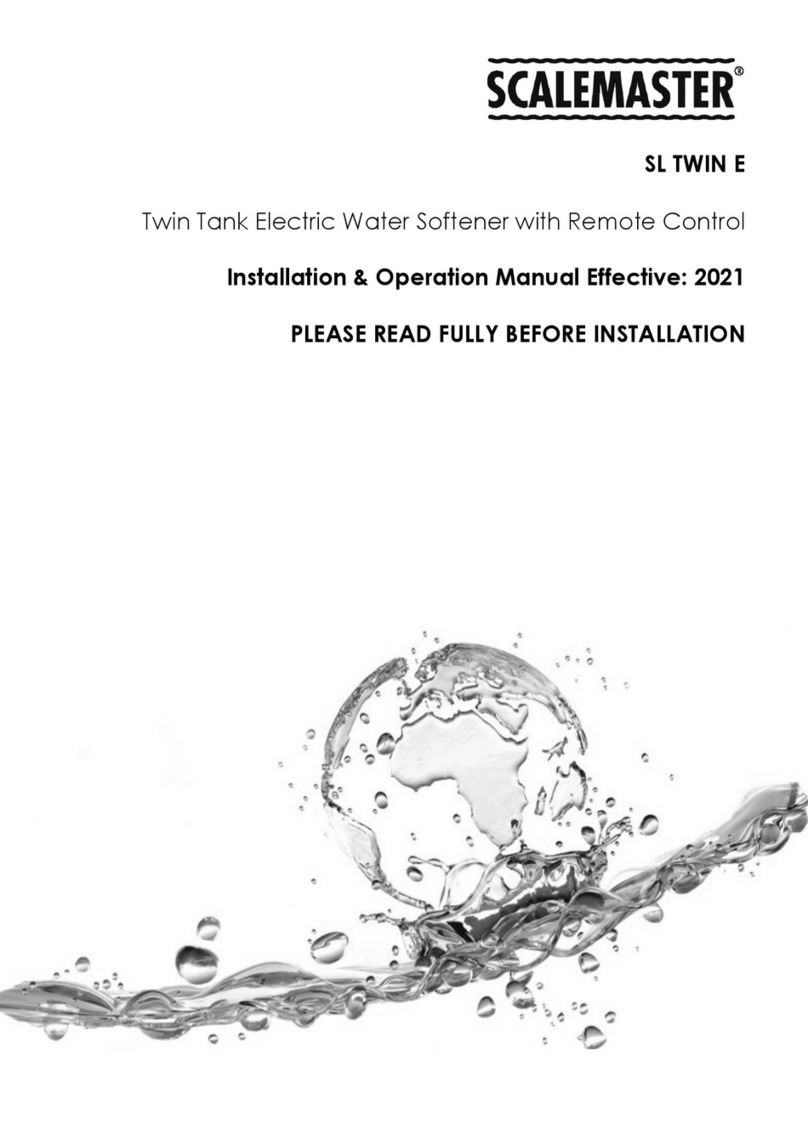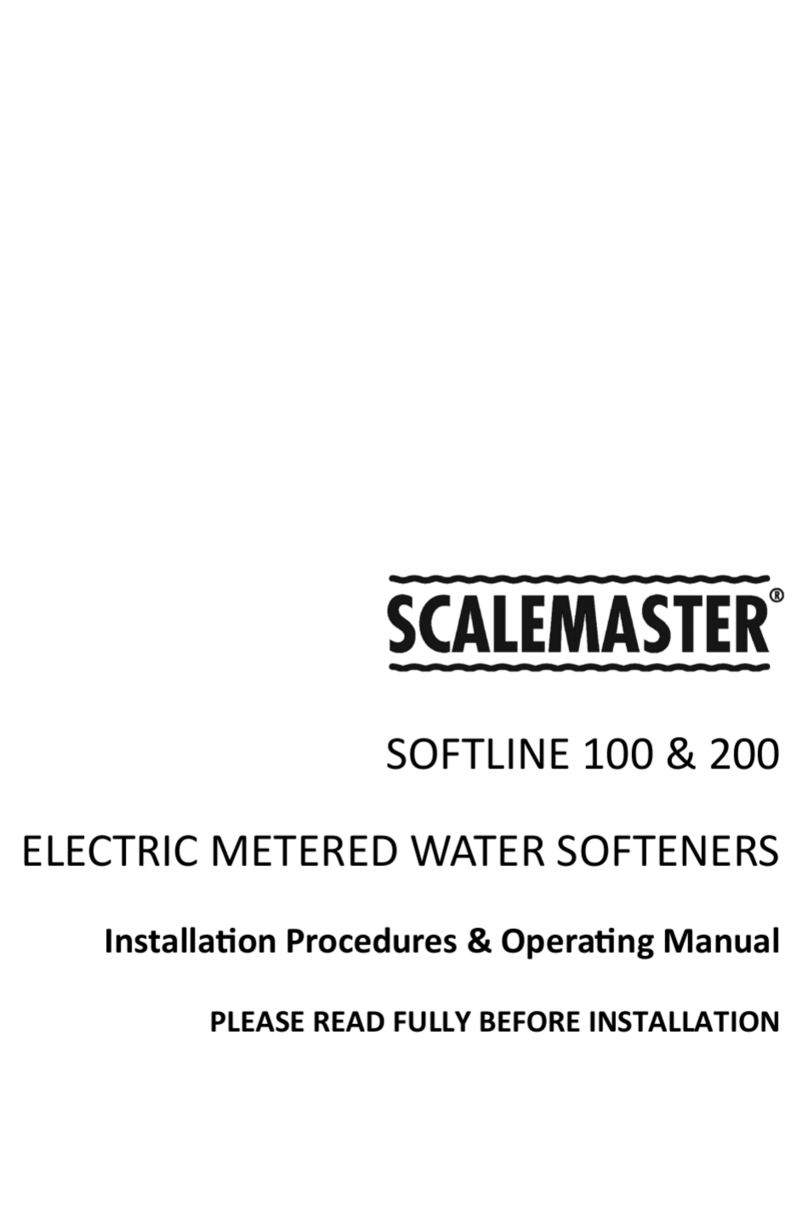Installation
It is recommended that your Water Softener is installed by a
professional plumber. This installation guide is written with the professional plumber
in mind and assumes that this person has a working knowledge of hydraulic water
softeners and domestic plumbing systems. Any electrical work required should be
carriedoutbyafullyqualiedelectrician.
Positioning the Water Softener.
●Measure your Water Softener and the space where it will be installed. Remember
to allow extra space for connecting pipework and access for future servicing and
topping up of salt.
●Keep the length of the incoming main and drainage pipework to a minimum.
2 metres is usually more than adequate but this can be longer in circumstances
where the water pressure allows.
●The weight of a Water Softener is greatly increased when fully operational and
lledwithsaltandthismustbetakenintoaccountwhenchoosingwheretositethe
softener.
●Your Scalemaster Water Softener is designed to operate with an incoming water
pressureofbetween1.0barand8bar.Ifyourwatersupplyislikelytofalloutside
these parameters we recommend that a booster pump or pressure-reducing valve
shouldbettedaccordingly.
Do not install your Water Softener next to a boiler or other heat source or in an airing
cupboardwheretheambienttemperatureislikelytoexceed40°C
Water Line and Bypass Connections
● AbypassloopshouldbeinstalledonallScalemaster100&200WaterSofteners.
The bypass valve loop isolates the Water Softener from the water system and
provides unsoftened water to the water system during routine maintenance and
servicing procedures.
IF YOU ARE CONSIDERING INSTALLING YOUR WATER SOFTENER IN A LOFT,
THE FOLLOWING INSTRUCTIONS SHOULD BE STRICTLY ADHERED TO:
Loft Installation
●The Water Softener may be installed in a loft or roof cavity but must be located
withinasafetybundtankofnotlessthan100litrecapacity.Asuitabletankwould
beaplasticroofstoragetankwithanoverowpipeofnotlessthan22mmdiameter.
This tank should also be mounted on a board strong enough to spread the weight
over a load-bearing wall/joists.
Drain Line Connection
●The unit should be higher than, and not more than 6 metres from, the drain. Use an
appropriateadapterttingtoconnect1/2” (12.5mm) plastic tubing to the drain hose
connection of the control valve.
●The drain hose may be elevated up to 1.8 meters providing the run does not
exceed 4.6 meters and water pressure at the softener is not less than 2.76 bar.
●Where the drain hose is elevated but empties into a drain below the level of the
control valve, form an 18cm loop at the far end of the hose so that the bottom of the
loop is level with the drain hose connection. This will provide an adequate siphon
tap.
●Where the drain empties into an overhead sewer line, a sink-type U-bend trap must
be used.
●Secure the end of the drain hose to prevent it from moving.
Drinking Water
● WhenttingyourWaterSoftener,allowanceshouldbemadeforatleastone
drinking water tap that is not fed by the Water Softener. Where practical this
should be at the kitchen sink but a Utility Room or other suitable alternative will
sufce.
● Itisrecommendedthatpeopleonalowsodiumdietshouldnotdrinkarticially
softened water. Water used for mixing infant powder for babies must only be taken
from unsoftened water as softened water contains an increased level of sodium
which will not be accounted for in the infant formula.
Brine Line Connections
Check the connections taking care not to over-tighten. Be sure that the regeneration
line is secure and free from air leaks.
Electrical Connection
● ForaddedsafetytheScalemaster100/200seriescontroloperatesonlowvoltage
via a plug in transformer.
Use only the transformer supplied with the Softener.
ANY ELECTRICAL WORK REQUIRED TO INSTALL A MAINS POWER
SUPPLY FOR THE SOFTENER SHOULD ONLY BE CARRIED OUT
BY A FULLY QUALIFIED ELECTRICIAN.
2 3






